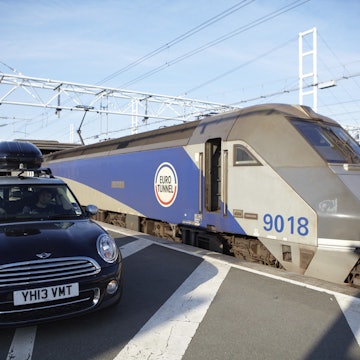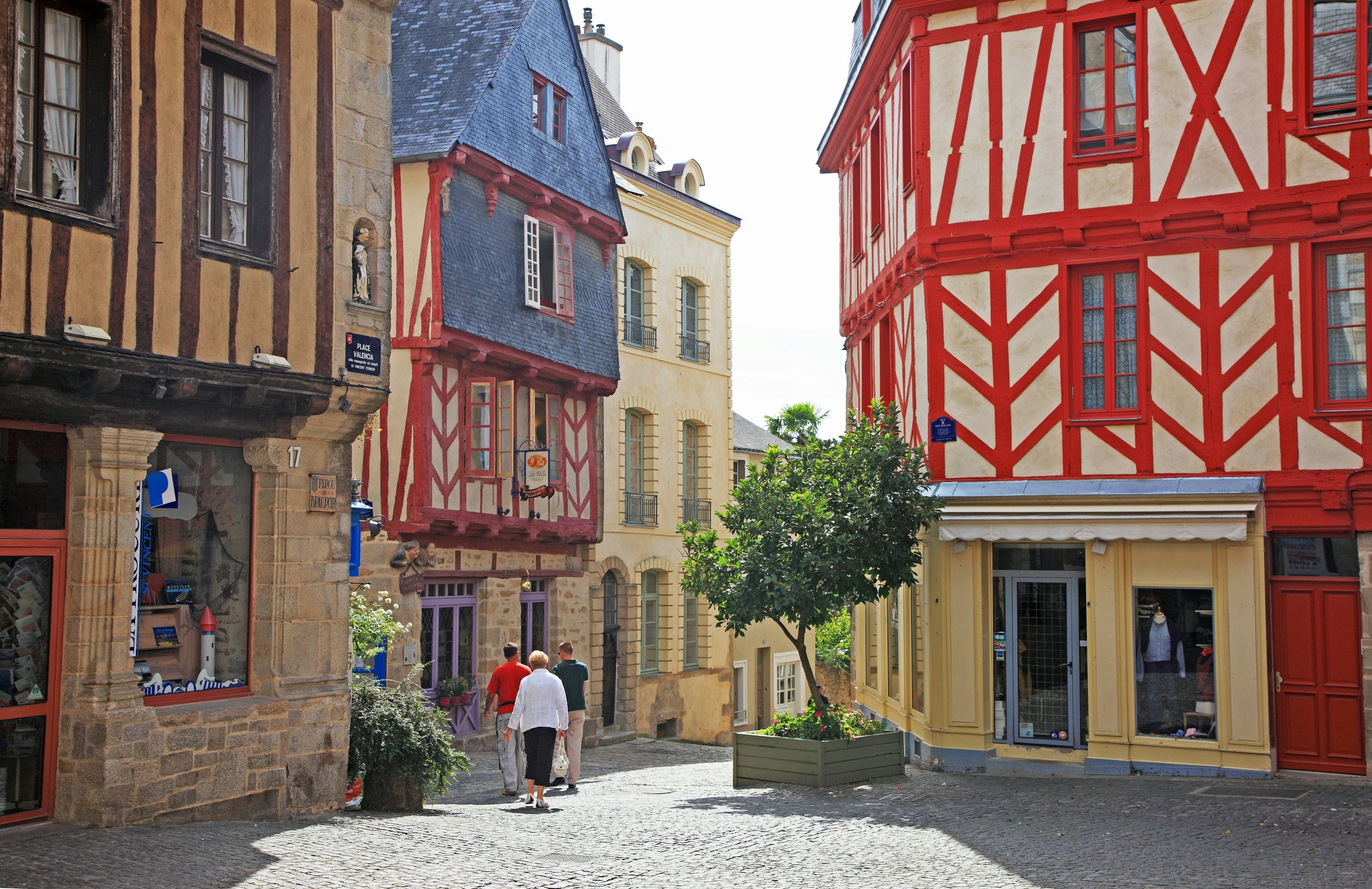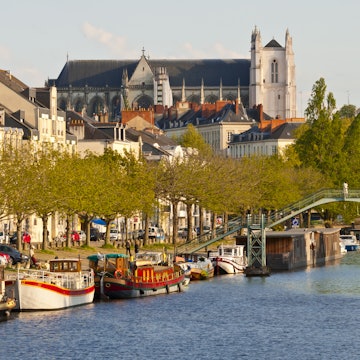

Taking the train and bus around Brittany is a delightful way to see the best of this French region © Franz Aberham / Getty Images
Our slow travel series explores how you can take more mindful journeys by train, boat, bus or bike – with tips on how to reach your no-fly destination, and what to see and do along the way. Here, Rebecca Crowe explains how she explored the northern-French region of Brittany and beyond using the extensive public transport network.
Visit Brittany, and you’ll feel like you’ve stepped back in time. Colorful timbered buildings, medieval forts and worn cobblestone streets all but dare you to slow down and savor the details as you explore.
Other than a friend who currently lives in the region, I knew next to nothing about (or no one in) Brittany. Yet as a budget traveler who loves to get away from the crowds, the region’s numerous small towns, each with its own culinary heritage and history, intrigued me. So I set off – sustainably.

The departure
Gateway to Brittany, the striking Gare de Rennes is where you can catch a train, city bus or metro, or long-distance coach. It’s packed with a mix of commuters striding confidently towards their destination, tourists huddled around translator apps and maps, and day trippers staring up at the departure boards. Skipping the ticket office, most travelers map their routes and buy their tickets using SCNF Connect. This invaluable app turned out to be my constant companion during my Brittany trip.
The journey
Trains in Brittany are double-decker style, with plush seating, ambient temperatures and sometimes even a cafe car. A journey on the rails tends to be a relatively quiet and relaxing affair, with everyone absorbed in their own thing.
By comparison, buses can feel a little like going on a school trip. The bus driver checks your tickets and throws any large baggage underneath. As you settle into your seat, the wi-fi you keep sniffing stops working as soon as you connect to it. The seat quality varies, but given how reasonable seats are compared to the train, you’ll be fine for a couple of hours – and have plenty of pastry money left over.
Brittany abounds with intriguing destinations. On the way to popular Brest, a naval town in the far west, you might stop in charming St-Brieuc, which has colorful streets, hiker-friendly coastal trails and a fabulous art deco chapel. Alternatively, you could jump on a train or bus to Quimper, known for its majestic Gothic cathedral, stopping along the way at Lorient in coastal Morbihan, where a Celtic festival draws crowds each August.
I opted to start in the coastal town of Vannes, whose half-timbered buildings, medieval ramparts and expansive views out onto the water are the stuff of fairy tales. I wouldn’t have been surprised to see someone emerging from one of the town’s delicious galette restaurants singing a song.
Next, a visit to Mont St-Michel Bay. While the magical island whose famous abbey pierces the sky lies inside the boundaries of Normandy, the sweeping bay that protects it is shared with Brittany.
Since Mont St-Michel is one of the region's biggest tourist attractions, it’s always busy – so make sure to book your bus tickets in advance. It is well worth joining the crowds and getting lost in the winding streets that spiral up and around the island. Top-tier seafood tempts, too, with mussels harvested directly from the bay in front of you. It doesn’t get fresher or more quintessentially French than this.

The arrival
Arriving in different Breton towns is always a bit of an adventure. Many have small train stations on the outskirts of the center. While they do the job, don’t expect free wi-fi and many amenities as you wait for your onward leg.
Arriving at two-platform Vannes train station, for instance, you instantly feel a small-town vibe before the 15-minute walk to the town center. Departing Vannes by bus means huddling with a crowd as you wait in a large parking lot.
The main parking area and bus stop at Mont Saint St-Michel are almost 3km (2 miles) from the island, requiring a lengthy walk or shuttle (departures every 12 minutes). Give yourself plenty of time to get back given the thousands of visitors queuing up for the shuttle. In the end, it was quicker for me to walk back to the bus stop than to wait for the ride.
All these logistics added to the sense of adventure. Walking into a town from its outskirts takes you past local scenes: of seniors catching up over a coffee and a pastry, and kids riding their bikes to school. When you’re dropped off in the center of a town, by contrast, you’re greeted with kitschy souvenir shops and gaggles of tour guides explaining history loudly in English, with tourists spinning around trying to get their bearings from their phones. That walk from the station is the perfect complement to slow travel: taking in the journey, truly embracing a place and tapping that thrilling sense of exploration.

How to make it happen
Tickets
Tickets from Rennes to Vannes start from €10, with routes to Mont St-Michel around €25. You can easily buy bus and train tickets through SCNF Connect or at the station. I booked the day before travel with no issue – but during peak season, book well in advance.
Food and drink
Some trains, including the TGV to Mont St-Michel, have a food and bar car – but it’s not cheap. It’s always best to pack your own food and drink for the journey, especially if you’re on the bus instead of the train.
Facilities
You’ll find wi-fi onboard most buses and trains, but it tends to be unreliable. You’re better off relaying on an eSIM if you need to stay connected. There’s also plenty of luggage storage on both, as well as toilets – yet as you might imagine, they’re not always, um, pristine.
Anything else?
Bus journey times are often a suggestion; some of my legs arrived about 20 minutes early, with others 10 to 15 minutes late. Give yourself plenty of time to spare at if you have activities or onward travel booked.
















